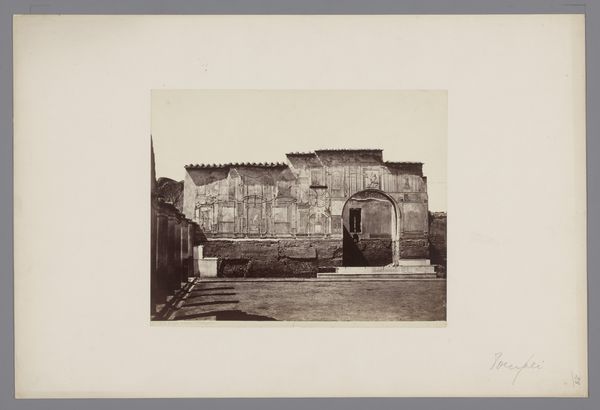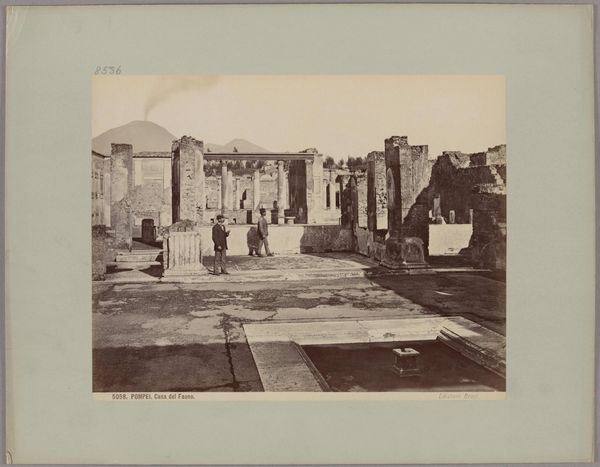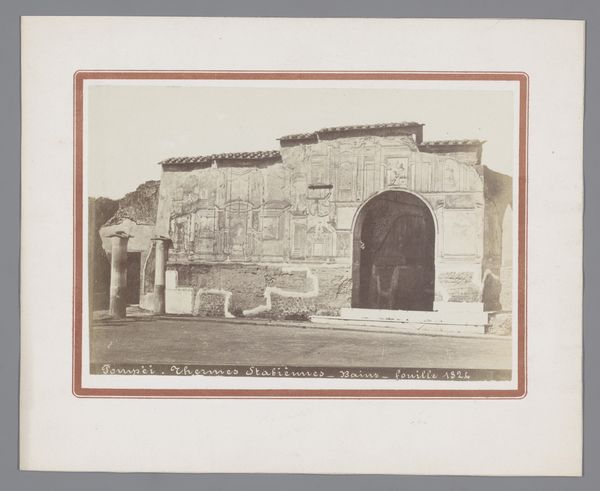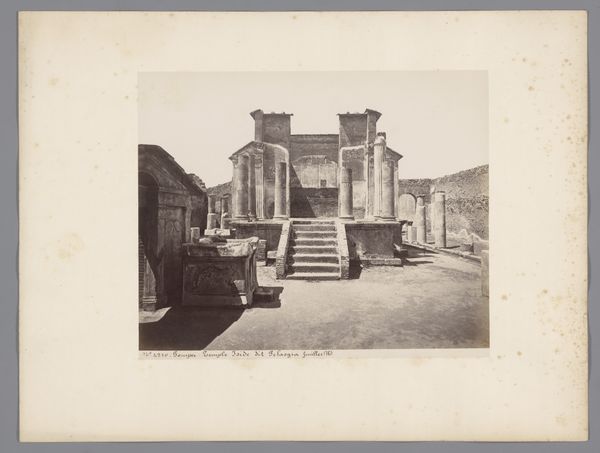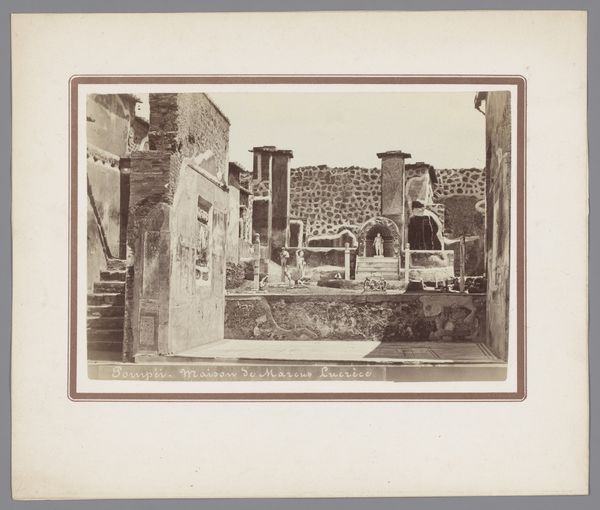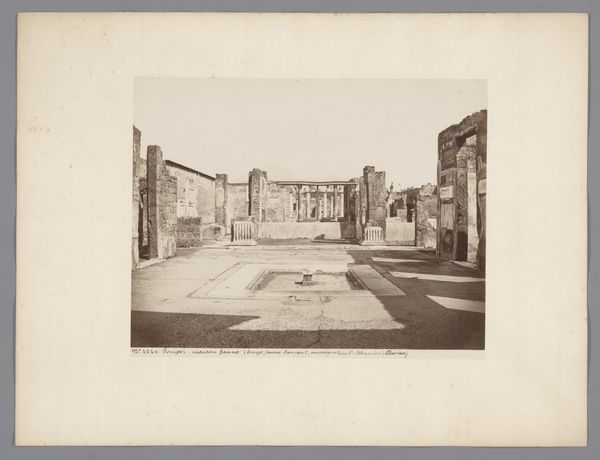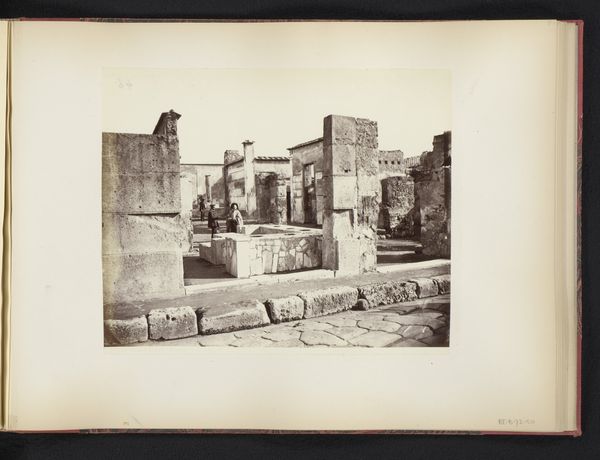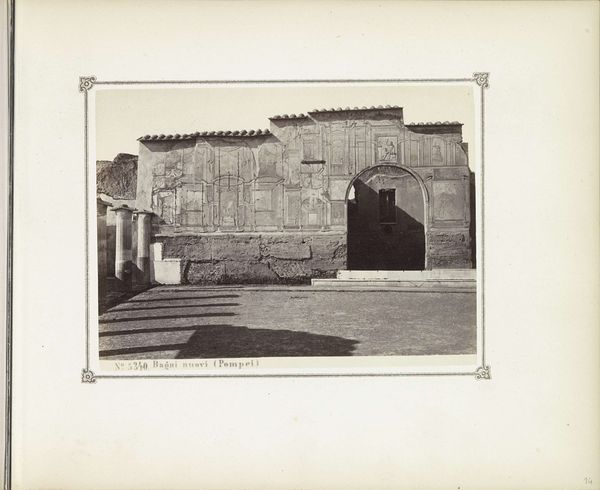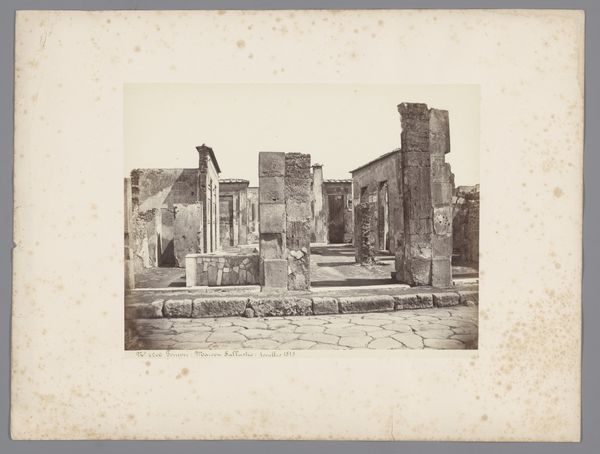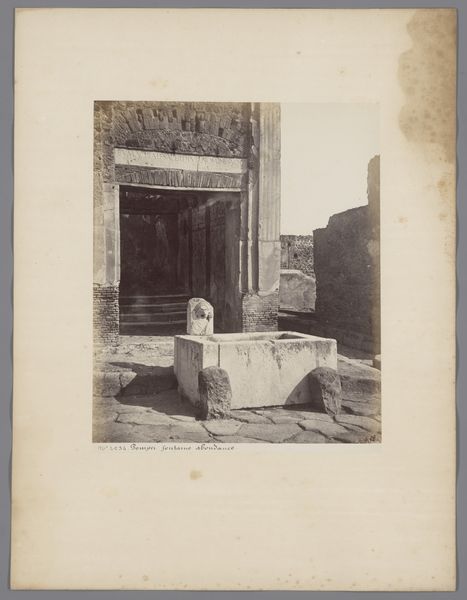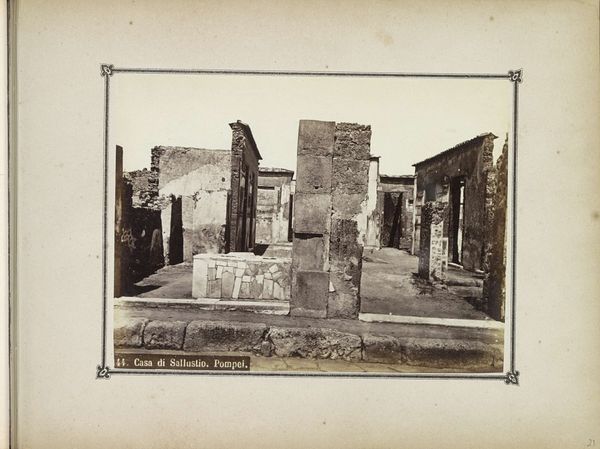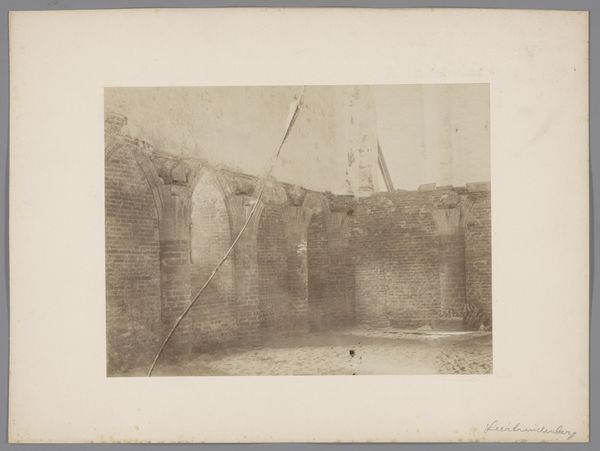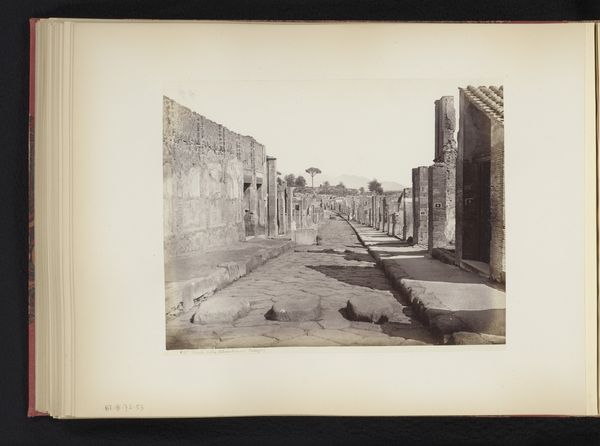
print, photography, gelatin-silver-print
# print
#
landscape
#
photography
#
ancient-mediterranean
#
gelatin-silver-print
#
cityscape
Dimensions: height 307 mm, width 405 mm
Copyright: Rijks Museum: Open Domain
Curator: Giorgio Sommer produced this evocative gelatin-silver print titled, "Ruïne van de Stabiaanse Thermen te Pompeï, Italië," sometime between 1857 and 1875. It's currently held in the Rijksmuseum's collection. Editor: Ruins always get me, don't they? This isn’t just old, it's holding a kind of... ghost architecture. Layers of faded frescoes still cling to the walls; it whispers about bathers, chattering, and lives abruptly interrupted by Vesuvius. Curator: The rediscovery of Pompeii in the mid-18th century had an enormous impact on European culture. It offered unparalleled insight into the daily life of the ancient world and significantly influenced architectural styles, interior design, and, of course, photography. This print reflects that fascination. Sommer and others sold these images as souvenirs, but also as documents for archaeological study. Editor: It’s strangely balanced, isn’t it? Even with the destruction. The composition leads your eye straight through the archway and beyond, hinting at what was there, and yet there's also this solidity in the remaining walls. Curator: Absolutely. And the tonal range Sommer achieved with the gelatin-silver process enhances that feeling of enduring strength. He captured the nuances of the stonework beautifully, emphasizing texture and form despite the obvious decay. The stark contrast is compelling. Editor: It also hits home when I imagine Sommer setting up his camera, what the process involved, standing in the same spot generations after that horrific eruption... the time and patience he brought makes it like he conjured this ghostly scene himself. It's all so tactile, it brings me a sort of somber connection with this place. Curator: Indeed. Photography allowed for a dissemination of knowledge and historical record like never before, helping to shape the ongoing narrative of Pompeii. It turned private history into the shared public domain. Editor: I’m always surprised that ruin photos don’t focus on pure decay; it seems they focus on perseverance after complete disaster. Like a reminder to start over. Curator: Precisely. This photograph stands as a reminder of both loss and survival. It is an artifact worthy of contemplation. Editor: To witness these silent stones speak after centuries of darkness and desolation, Giorgio Sommer somehow translated this historical echo in silver.
Comments
No comments
Be the first to comment and join the conversation on the ultimate creative platform.
